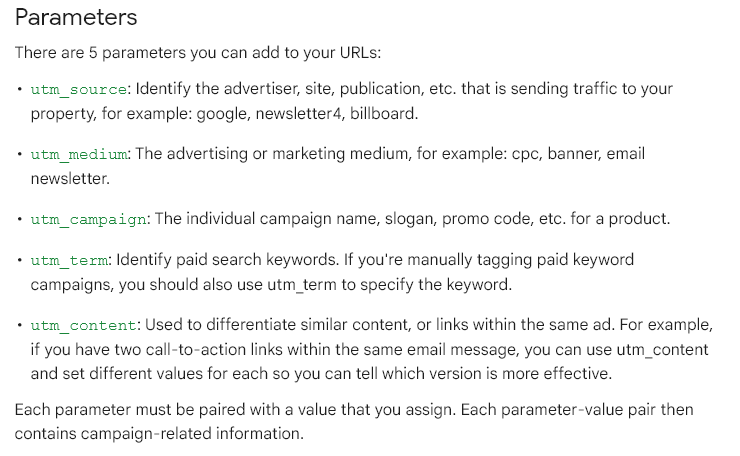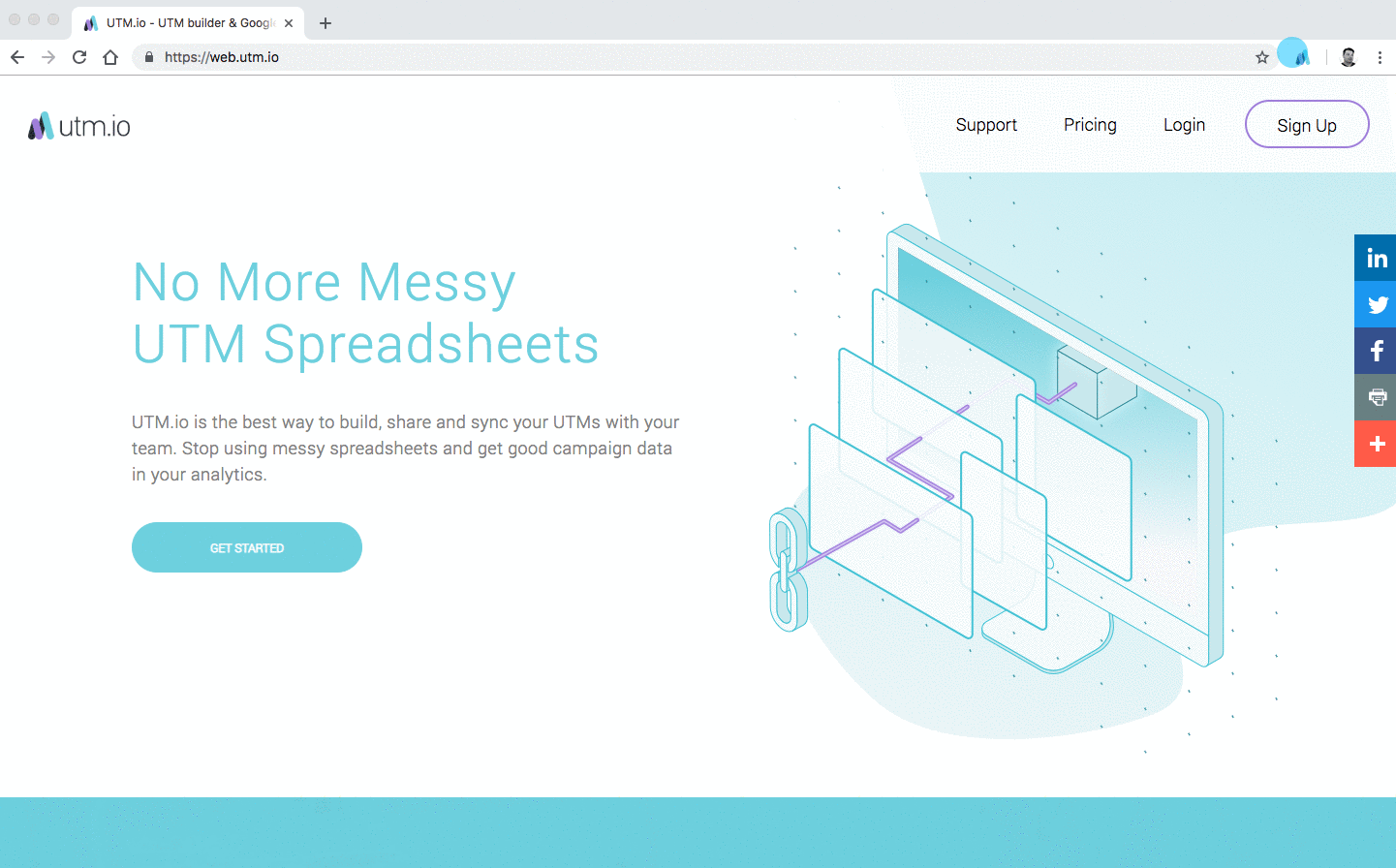Poor quality data is a problem for many organizations. When it comes to marketing attribution, this problem starts with unreliable and inconsistent UTMs. So before implementing a multi-touch attribution (MTA) model, you should first verify that UTM parameters are set correctly. If they aren’t, then building an MTA model is simply a waste of time and resources.
Key Takeaways
- It is only with proper UTM tagging that your multi-touch attribution model provides clear visibility on what happens at every touch point in the customer journey. If people don’t know how to properly label UTMs, or your company has unclear rules on UTM usage, then chances are your MTA model will be collecting bad data. Bad input always leads to bad output.
- People make mistakes all the time when using UTMs for marketing campaigns. For example, one might use utm_source=facebook while another uses utm_source=Facebook. Notice how Facebook is capitalized in one link, but not the other. These differences can pollute the data you use when building multi-touch attribution models. Facebook and facebook will be considered different sources. This means analytics tools will also group them into separate buckets. This can mess up campaign reports.
- To make sure the data that goes into your multi-touch attribution model is clean, follow these steps. First, assess the quality of the UTM links your organization currently has. If you find any inconsistencies, plan and organize your UTM parameters so that everyone in the organization follows a naming convention. Secondly, use a data governance tool like UTM.io’s URL campaign builder to limit any human errors when building UTM parameters. Lastly, have a data lord who ensures that the data you collect is always clean.
Using UTMs for Precise Marketing Attribution
The biggest roadblock to multi-touch attribution (MTA) is bad data. If you have bad data coming in, you’re never going to be able to do multi-touch.
Dan McGaw, CEO and Founder of UTM.io
Inconsistent or inaccurate UTM tagging renders bad data which results in unreliable marketing attribution reports. The good news is that creating the right UTMs can be done. At McGaw.io, we never jump into client projects without first making sure that there are set rules for UTM naming and implementation.
As Dan McGaw, CEO and Founder of UTM.io says: “One of the things that we try to get really good at with any kind of project that we’re working on is to get the taxonomy and the data schema correct in the beginning. The more proactive we are, the more successful we can be later.”
However, this process isn’t always a walk in the park. Based on our experience working with both large and small businesses, UTM parameters are easy to mess up. Browse through enough ads online and you’ll quickly find incorrect UTM naming even by well-established brands.
Here’s a UTM link I recently saw from a big brand in an established eCommerce store:
https://www.example.com/classics.html?classic=theoldskool#banner=WK15.OldSkoolXAndersonPaak.CTA_DiscoverMore.HP_Hero?utm_source=social&utm_medium=social_paid&utm_campaign=FA22_Classics_UK_PROGRAMMATIC
Utm_source says social. Utm_medium says social_paid.
But I didn’t find this ad on any social media site.
This misattribution will lead to serious problems with data. What happens if this ad starts performing very well? The marketing attribution report will attribute a higher ROI to social — which is incorrect. And that’s not the half of it.
Let’s imagine that this ad really did come from a social media site. Since the UTM parameter does not specify which social media site it is (which is what utm_source is for), that info isn’t that worthy. Such mistakes will swing your marketing attribution data in the wrong direction — which is no better than guessing.
This all goes to show that reliable marketing attribution boils down to one thing: proper use of UTM parameters. With correct UTM naming, you’ll be able to extract data from any campaign, plug it into your attribution software, and get reliable reports every time.
So the first concern when it comes to building a marketing attribution model isn’t which one you should use. That’s the easy part. The question should be, “How do I make sure that the data that goes into my attribution model is correct and reliable?”
Proper UTM usage helps you with that.
Get precise marketing attribution
How UTMs Enable Multi-Touch Attribution Models
We regularly see this scenario with our clients: Teams within an organization often use different tools to run different campaigns. Within each team, different people build UTMs, all with different ways of doing it. This results in 10 different UTMs for the same thing.
What’s more, all this bad data gets sent to one customer data platform (CDP). This convergence of dirty data in one tool can be potentially damaging to any marketing decisions.
As Dan McGaw explains, “We leverage customer data platforms all the time. So products like Segment, MetaRouter, mParticle, they basically become a data pipeline for all of your data. The hard part about leveraging a tool like that, even when you’re thinking about multi-touch attribution, is that you’ve now made it so that you’re not talking to a tool one-on-one. You’re now making it so that you talk to one specific tool that now translates that into 80 different languages to work with 80 different tools, and each one of those tools has a different purpose. So getting that data taxonomy is going to be very critical for multi-touch attribution or any reporting you have in general.”
Ensuring UTMs line up can be done. All analytics tools and most marketing software understand and use UTMs, you just have to lay down a UTM convention that everyone in your organization adheres to. Couple this with a campaign URL builder tool and data governance software, and you’ve got the whole organization working together to collect data that everyone can use for whatever purpose each team needs it for.
With reliable UTMs, the data that goes into your multi-touch attribution model (MTA) will be clean. And so when your MTA model shows the different touch points of the customer journey and identifies which channels and campaigns lead to higher ROAS or CLV, you know it’s based on reliable data.
How to Feed the Right Touchpoint Data into Attribution Tools with UTMs
Having a strategy in place for creating UTM parameters enables everyone in the organization to build correct UTM links. Below are the three steps we follow so that attribution tools get clean data for any MTA model.
1. Look at your current UTMs and clean them up, if necessary.
We work with billion-dollar corporations and SaaS companies with 10+ million in ARR, and often start our work by cleaning up and organizing their data. This process often involves cleaning up UTMs.
Dan McGaw says, “We don’t even worry about what is going to be the attribution model, the look back windows, or any of that stuff until we do an assessment and ask if we can effectively track conversions in a digital and automated way. Can we actually see all the different touch points with the data we have?”
So if your organization has been using UTMs for marketing attribution, first assess whether you’ve got good clean data. See to it that the UTM parameters are accurate and consistent across the board. And verify that UTM taxonomy and schema all line up.
2. Plan and name UTMs with intention
On the surface, naming UTMs is straightforward. Google Analytics tells us exactly what value belongs in each parameter.
There are things you’ll have to put in place so that everyone is using the same naming convention. In our experience, deciding what UTM values to use doesn’t come naturally to most organizations. This is why using UTM tags should be done carefully. So before building a multi-touch attribution model, getting that data taxonomy right is going to be critical.
Dan McGaw asserts, “This is where we see a lot of companies just throw shit at the wall and hope that their data taxonomy is going to work. They don’t take it seriously enough. And then they just let it go into the system. In the modern stack when you’re using a customer data platform or artificial intelligence or anything like that, what people don’t understand is that when you have bad inputs, you get bad outputs. But if you have a bad input and then you throw it into automation, you’ll have 10 times worse outputs. So get that taxonomy part correct in the beginning and build out a data dictionary. Take the time to understand what you’re going to call things.”
What people don’t understand is that when you have bad inputs, you get bad outputs. But if you have a bad input and then you throw it into automation, you’ll have 10 times worse outputs.
You can manage and organize this with a UTM builder and data governance tool like UTM.io. Using tools like this will allow you to have a full set of UTM builder rules that lock things down so that people can only create UTMs in the same way every time.
3. Have a data lord who oversees data management
A data lord is the overseer of a company’s data and sees to it that no one pollutes the collected data. They make it easy for everyone to use UTMs for marketing attributions — no matter which department the person belongs to.
They also help minimize human error in data collection and facilitates a clear line of communication between different departments within the organization.
Common Mistakes to Avoid When Using UTMs for Marketing Attribution
The first step to generating good data for marketing attribution is to acknowledge that mistakes can happen. And then putting precautions in place to stop or minimize them. Let’s explore the common mistakes to avoid so that your multi-touch attribution models always get reliable data.
Using UTMs on internal links
UTMs are used only for external links to track traffic sources and the user behavior before arriving at your site. Using them on internal links will mess up your data.
Not hiding UTM parameters after data is registered by analytics tools
Having UTM links visible on the browser all the time usually prompts users to copy that URL as is when sharing it with others.
This results in misattribution. Use a URL cleaner to delete the parameters once analytics tools have registered the data.
Not documenting all UTMs made
Inconsistencies can easily occur if you don’t document all the UTMs made by everyone in the company.
A UTM builder spreadsheet is great if you don’t run a lot of campaigns. For businesses that run more campaigns, use a data governance software to manage all your UTMs.
Using identifiable info on UTMs
Apart from it being an inelegant practice, you may also get into legal troubles if you do this. So just don’t.
Not using a custom URL builder for pretty links
You can use a link shortener like ShortURL.. But be aware that some people are suspicious of them. We recommend shortening the links using a branded domain.
TL;DR
UTM parameters are powerful for data analysis and optimizing campaign marketing performance. They also enrich your multi-touch attribution models. However, they’re equally damaging when not set correctly.
Following the best practices of UTMs within your organization is the best way to guarantee correct marketing attribution. This ensures that you feed clean data into your marketing attribution software which makes building multi-touch attribution models a quicker, easier, and more pleasant task.


